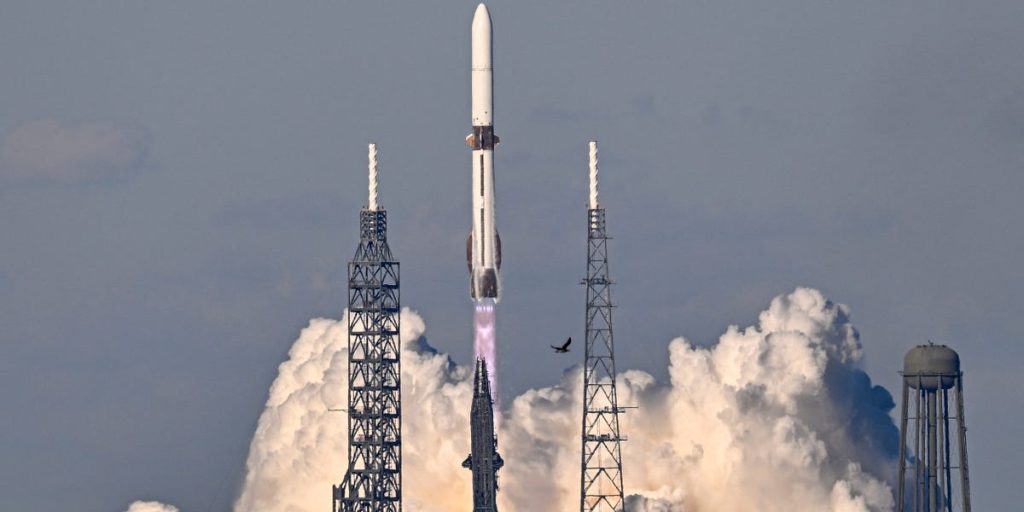Steve Nesius/Reuters
2025-11-13T23:26:11.875Z
Blue Origin’s New Glenn rocket launched NASA’s Escapade Mars orbiters from Florida.
The mission marks Blue Origin’s first successful booster recovery.
Escapade will study Mars’ atmosphere and aid NASA’s future astronaut mission planning.
Jeff Bezos’ space company just hit a major milestone.
On Thursday afternoon, just before 4 p.m. ET, Blue Origin’s massive New Glenn rocket dazzled the Florida sky and sent a pair of NASA spacecraft bound for Mars.
Blue Origin
The 321-foot rocket roared off the pad at Cape Canaveral Space Force Station after several days of weather delays. On board the New Glenn is NASA’s Escapade mission, twin orbiters designed to study Mars’ upper atmosphere and magnetic fields.
The most groundbreaking moment came minutes after the launch.
As the upper stage continued toward space, the first-stage booster separated and returned safely to Earth, touching down upright on Blue Origin’s offshore barge, named Jacklyn after Bezos’ mother. The successful recovery drew cheers from mission control and marked a crucial milestone in Blue Origin’s push to make its rockets reusable.
“Next stop, moon!” employees can be seen chanting in the livestream video as the booster landed against the Atlantic horizon.
The successful recovery is a first for New Glenn and comes nearly a year after the booster missed its recovery attempt in January. The breakthrough brings Blue Origin closer to rivaling SpaceX’s reusable rockets.
After the launch, Blue Origin CEO Dave Limp congratulated the team and shared close-up still photos from the launch and the recovery.
The Escapade satellites will spend the next year orbiting near Earth before slinging toward Mars in 2026. They’re expected to arrive in 2027, where they’ll begin mapping how solar winds strip away the Martian atmosphere, which would offer insights that could help NASA plan for future astronaut missions.
To see the full New Glenn launch, visit the Blue Origin livestream here:

